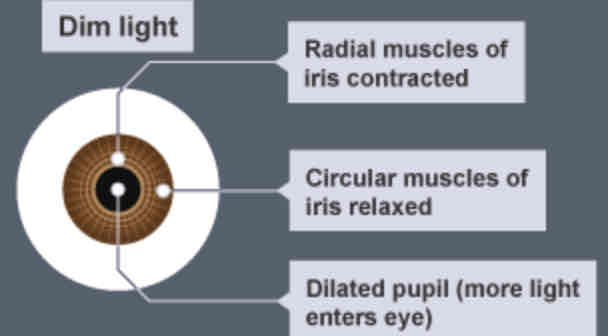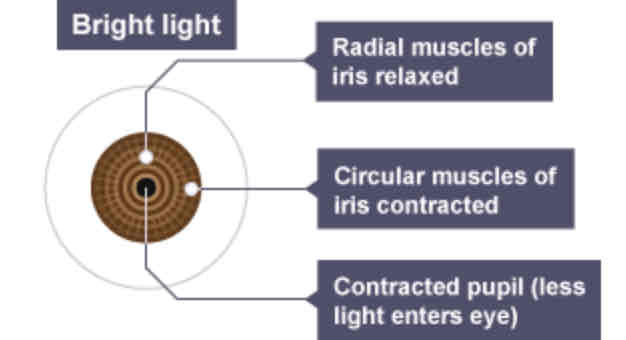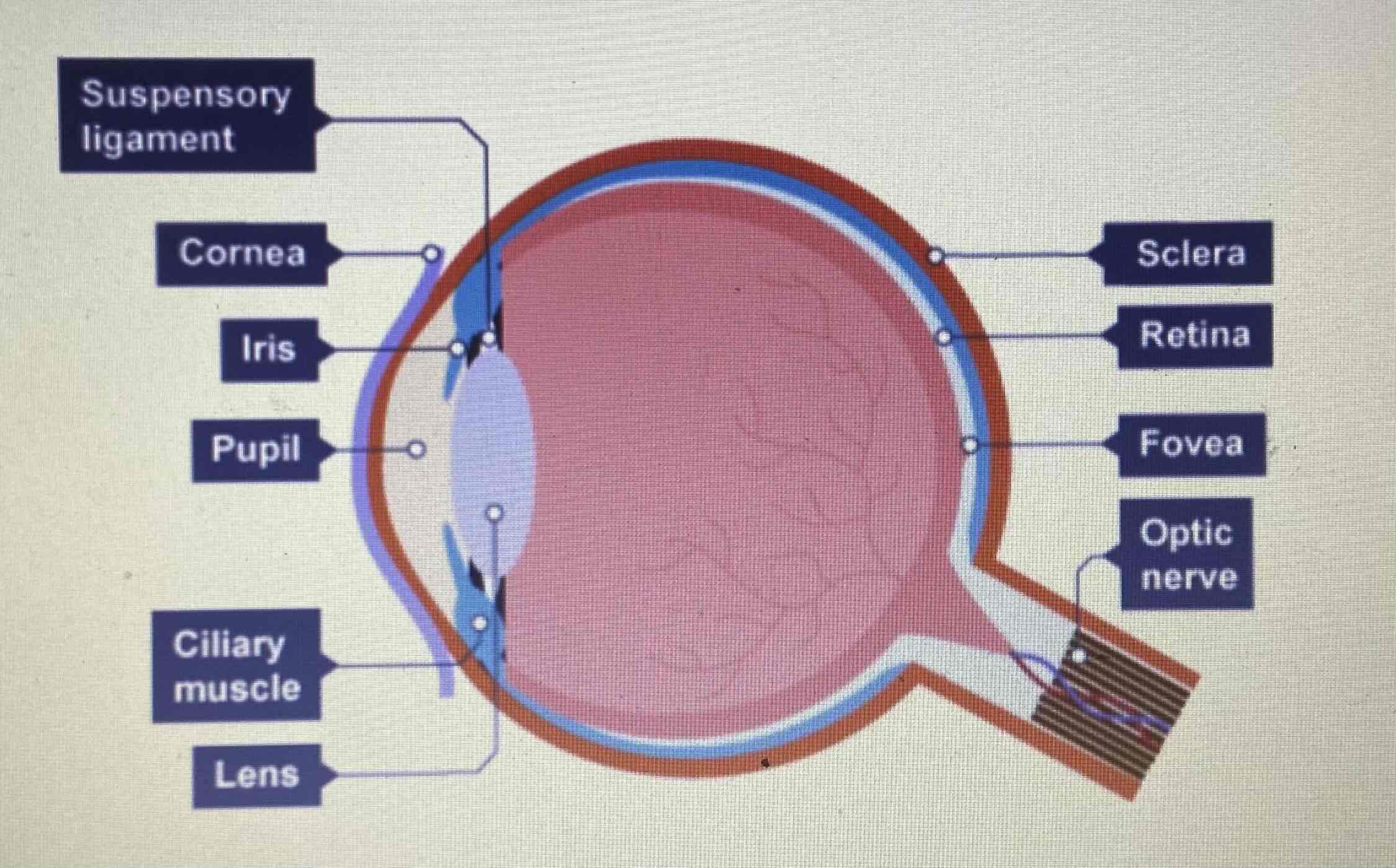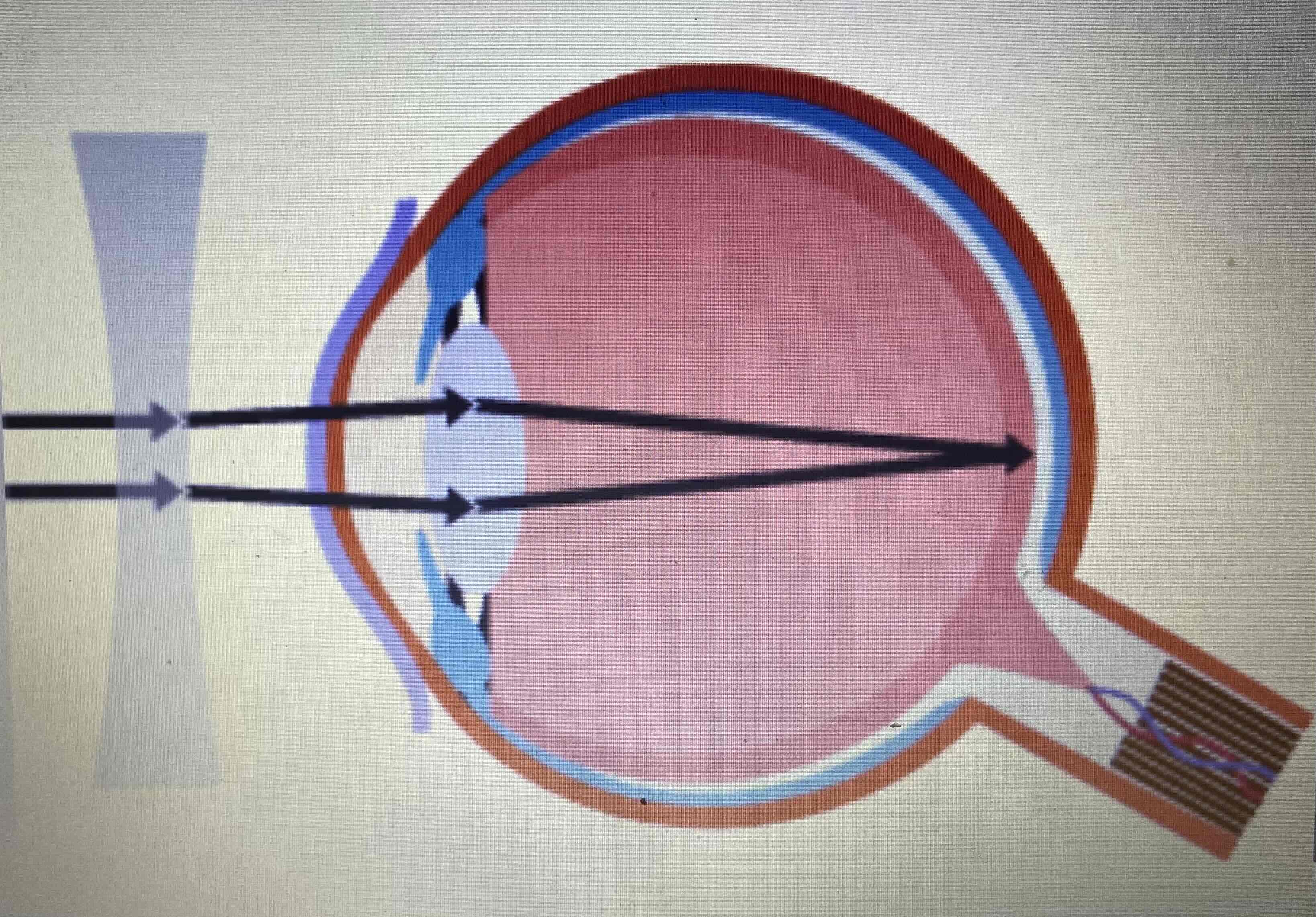B5 - Homeostasis
1/285
Earn XP
Description and Tags
Name | Mastery | Learn | Test | Matching | Spaced |
|---|
No study sessions yet.
286 Terms
ruler drop test method
work with a partner.
person A holds out hand with gap between thumb and 1st finger
person B holds ruler with the 0 at top of person A’s thumb
person B drops ruler without telling person A and they must catch it
The number level with the top of person A’s thumb is recorded in a suitable table. Repeat 10 times.
Swap places and record the other 10 attempts
Use the conversion table to help convert your ruler measurements into reaction time or just record the catch distance in cm.
in the ruler drop test, what effect does noise have in the reaction time?
increases reaction time
the brain is made of
billions of interconnected neurones
the brain controls
complex behaviour
the 4 main areas of the brain are
the cerebrum, the cerebellum, the medulla and the hypothalamus
the cerebrum function
controls intelligence, personality, conscious thought and high-level functions eg. language and verbal memory
the cerebrum description
split into 2 hemispheres and highly folded
what is the outer layer of the cerebrum called
cerebral cortex
the cerebellum function
controls balance, coordination of movement and muscular activity
the medulla function
controls unconscious activities such as heart rate and breathing rate
the hypothalamus function
regulating centre for temperature and water balance within the body
How have neuroscientists been able to map regions of the brain to their particular functions?
Studying patients with brain damage , electrically stimulating different parts of brain and using MRI scanning techniques
Who and when has an accident whilst laying railway tracks and what happened to him?
Phineas Gage in 1848 had an iron rod go through his skull
What happened after the skull accident in the 19th century
He survived but he lost his inhibitions socially and emotionally due to the rod passing through particular parts of his brain
Non-invasive brain procedures include
EEGs and MRIs
What does MRI stand for
Magnetic resonance imaging
What does EEG stand for
Electroencephalogram
How does an EEG work
Different parts of brain stimulated with a weak electrical current. If motor area is stimulated, patient makes involuntary movement. If visual area stimulated, patient can see flash of colour. Results can be traced and studied to observe electrical activity in brain using an EEG reading.
How do MRIs work
Use strong magnetic fields and radio waves to show details of brain structure and function. Patient is asked to do various tasks and by looking at scans it is visible which parts of brain are active during each task.
Risks of brain surgery
Due to complexity and delicacy of brain, more damage or side-effects could be created, which could affect patient’s quality of life.
Possible reasons for brain surgery
Removing tumour or excess fluid eg. Blood
Eye definition
A sense organ containing receptors sensitive to light intensity and colour
Cornea function
Refracts light - bends it as it enters the eye
Iris definition
Controls how much light enters pupil
Lens function
Further refracts light to focus it onto retina
Retina function
Contains the light receptors
Optic Nerve function
Carries impulses between eye and brain
Sclera function
Tough white outer layer of eye. Helps protect eye from injury
how does vision work?
rays of light are bent so the brain can make sense of them and they hit the retina. this sends impulses to the brain. the light is focused by the lens.
main types of light receptors
rods and cones
which type of light receptor is more sensitive to light
rods, so they’re useful for seeing in dim light/in the dark
the amount of light entering the eye is controlled by a ____ ____
reflex action
when the eye is in dim light, the pupil _____ to …
dilates to take in more light
what controls the changing of the pupil’s shape
the muscles of the iris
eyes in dim light diagram

eyes in bright light diagram

accommodation definition
the process of changing shape of the lens to focus on near or distant objects
to focus on a near object
lens becomes thicker to allow light rays to refract (bend) more strongly. for this, the suspensory ligaments loosen, so there is low muscle tension.
to focus on a distant object
lens is pulled thinner to allow light rays to refract (bend) only slightly. for this, the suspensory ligaments stretch, so there is high muscle tension.
parts of the eye diagram (10)

2 most common defects of the eye
myopia (short-sightedness)
hyperopia (long-sightedness)
what causes the 2 most common eye defects
the rays on light do not focus on the retina so a clear image is not formed
potential causes of myopia
elongated eyeball, so distance between lens and retina is too great
lens being too thick and curved, so rays are refracted too much
in all cases, light is focused in front of the retina rather than on it
potential causes of hyperopia
eyeball is too short, so distance between lens and retina is too small
loss of elasticity in the lens, so light is not refracted enough (often age-related)
in all cases, light focuses behind the retina rather than on it
fix to myopia
placing a concave lens in front of the eye as shown

fix to hyperopia
placing a convex lens in front of eye as shown

how do contact lenses work
work by being ‘in contact’, float on surface of cornea, work like spectacle lenses by fo
how does laser surgery work
reshapes cornea surgically. common for myopia but can be used for some hyperopia conditions
how do replacement lenses work
implanting artificial lenses to be placed in front of original lens of eye through a small cut in the cornea. this is a recent development.
hormone definition
chemical substance produced by a gland which alters the activity of specific target organs
what happens to a hormone after it has been used
it is destroyed in the liver
what are the effects of the endocrine system in comparison to nervous system
the effects of hormones are much slower than nervous system but they last much longer
what type of signal does the nervous system send
electrical (chemical at synapses)
what type of signal does the endocrine system send
chemical
how are the signals transmitted in the nervous system?
by nerve cells (neurones)
how are the signals transmitted in the endocrine system?
by the bloodstream
what are the effectors of the nervous system?
muscles or glands
what are the effectors of the endocrine system?
target cells in particular tissues
what type of response is received as an effect of the nervous system?
muscle contraction or secretion
what type of response is received as an effect of the endocrine system?
chemical change
what is the speed of the response for the nervous system?
very rapid
what is the speed of the response for the endocrine system?
slower
what is the duration of the response for the nervous system?
short (until nerve impulses stop)
what is the duration of the response for the endocrine system?
long (until hormone is broken down)
what gland is known as the master gland
the pituitary gland
what is the function of the pituitary gland?
to secrete several hormones into the blood in response to body’s condition, such as blood water levels. it can also act on other glands to stimulate release of different types of hormones
where is the pituitary gland
in the brain
where is insulin produced
pancreas
where is thyroxine produced
thyroid gland
where is testosterone produced
testes
where is oestrogen produced
ovaries
why is the role of adrenaline
preparation for ‘fight or flight’, meaning body can perform a quick action where it is essential
where is adrenaline produced
adrenal glands
what are the target organs for adrenaline
several targets including respiratory and circulatory systems
what are the target organs for insulin
liver
what does ADH stand for
anti-diuretic hormone
where is ADH produced
pituitary gland
what is the target organ for ADH
kidneys
what is the role of ADH
controlling water content of blood
effects of ADH
increases reabsorption of water by the collecting ducts
effects of adrenaline
increases breathing rate, heart rate, flow of blood to muscles (therefore diverting blood away from areas such as digestive system), conversion of glycogen to glucose
role of insulin
controlling blood glucose levels
effects of insulin
increases conversion of glucose into glycogen for storage
negative feedback control system
responds when conditions change from optimum point and returns conditions to normal. continuous cycle of events
negative feedback control system diagram
what is the role of thyroxine
stimulates the basal metabolic rate by controlling the speed at which oxygen and food products react to release energy for the body to use
what do low thyroxine levels stimulate
stimulate hypothalamus to release TRH, causing pituitary gland to release TSH so thyroid releases more thyroxine and blood levels return to normal
what do normal thyroxine levels stimulate
prevent/inhibit TRH release from hypothalamus and this inhibits TSH release from pituitary, so normal blood levels are maintained
are thyroxine levels controlled by negative feedback?
yes
are adrenaline levels controlled by negative feedback?
no
when is adrenaline released
in times of fear or stress
what does TSH stand for
thyroxine stimulating hormone
if the blood glucose concentration is too high…
pancreas produces insulin that causes glucose to move from the blood into cells. in liver/muscle cells, excess glucose is converted into glycogen for storage
effects of low glucose on pancreas
insulin not secreted into blood
effects of low glucose on liver
does not convert glucose into glycogen
effects of low glucose on blood glucose level
increases
effects of high glucose on pancreas
insulin secreted into blood
effects of high glucose on liver
converts glucose into glycogen
effects of high glucose on blood glucose level
decreases